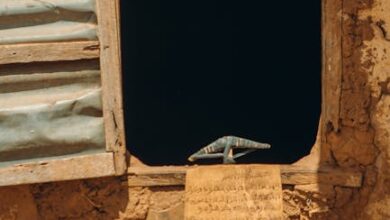The Guiding Light: Who Was Al-Sayyid Al-Badawi?

Imagine a city, typically bustling with the hum of industry, suddenly shedding its everyday skin to embrace an identity centuries old. Its streets, usually traversed by commuters and local commerce, swell with a tide of humanity – not in protest or panic, but in profound spiritual devotion and joyous celebration. This isn’t a scene from a fantasy novel; it’s the annual reality of Tanta, Egypt’s vibrant Nile Delta city, when it hosts the Moulid Al-Sayyid Al-Badawi.
For one spectacular week each October, Tanta transforms into a pulsating heart of faith and festivity, drawing pilgrims by the hundreds of thousands, sometimes even millions. They come from across Egypt and beyond, converging to honor a revered 13th-century Muslim Sufi saint, Ahmed Al-Badawi, known affectionately as Al-Sayyid Al-Badawi. His shrine, an anchor of history and spirituality, stands majestically at the city’s core, becoming the epicenter of an event that beautifully fuses deep religious ritual with the exuberant spirit of a popular carnival. It’s a sensory feast, a spiritual journey, and a cultural spectacle all rolled into one – a testament to enduring faith and community spirit.
The Guiding Light: Who Was Al-Sayyid Al-Badawi?
To truly understand the essence of the Moulid Al-Sayyid Al-Badawi, we must first delve into the figure at its heart: Ahmed Al-Badawi. Born around 1199 in Fez, within the Almohad Caliphate (modern-day Morocco), Al-Badawi was a scholar and mystic destined for a profound spiritual path. His journey eventually led him to Egypt, a land where he would leave an indelible mark on its spiritual landscape.
It was in Egypt that Al-Badawi founded the Badawiyya order of Sufism. For those unfamiliar, Sufism is a mystical branch of Islam, often described as the inner, esoteric dimension of the faith. Its followers, known as Sufis, strive to attain divine love and understanding through a personal, direct experience of God. It’s a path characterized by asceticism, intense devotion, and a profound quest for spiritual purification. Al-Sayyid Al-Badawi’s teachings and spiritual guidance resonated deeply with people, attracting a large following and establishing him as a venerated saint and spiritual guide across Egypt.
After his passing in 1276, his tomb in Tanta became far more than just a burial site. It evolved into a sacred destination, a focal point for pilgrimage and devotion, a place where believers could connect with his spiritual legacy and seek blessings. His influence continues to ripple through generations, making the annual celebration of his birth a cornerstone of Egyptian cultural and religious life.
A Festival Unfolding: Where Devotion Meets Delight
The Moulid Al-Sayyid Al-Badawi isn’t merely an anniversary; it’s a living, breathing tapestry of tradition that unfolds over an entire week in October. It’s a time when Tanta, usually a hub of agricultural and textile industries, sheds its industrial skin to reveal a vibrant, ancient soul. The air itself seems to thicken with anticipation, punctuated by the rhythmic chants, the aroma of traditional foods, and the joyful clamor of a community coming together.
The sheer scale of the event is breathtaking. Imagine two million visitors, as was the case this year, descending upon a single city. These aren’t just tourists; they are pilgrims, families, and seekers, all drawn by a shared reverence and the magnetic pull of communal festivity. The streets become rivers of people, flowing towards the central shrine, each face reflecting a mix of solemnity, hope, and pure, unadulterated joy.
The Rhythms of Revival: Music, Prayer, and Shared Blessings
As dusk settles over Tanta during the moulid, the city truly comes alive. Late-night gatherings of prayer and song fill the air, creating an almost hypnotic atmosphere. Dervishes, followers of Sufism, engage in their mesmerizing whirling dances, their movements a form of prayer that seeks to achieve spiritual ecstasy. Chants echo through crowded alleyways, stories of Al-Badawi’s miracles are retold, and collective prayers rise towards the heavens, creating a powerful sense of unity and spiritual communion. It’s an experience that transcends mere observation; it invites participation, drawing you into its rhythmic embrace.
A Culinary Journey: Feasts for the Soul and Stomach
Beyond the spiritual rites, the moulid is also a grand celebration of community and generosity. One of its most beloved traditions is the offering of free communal feasts. In an incredible act of devotion and hospitality, locals and pilgrims alike share massive meals, often prepared in colossal pots, to feed the masses. This isn’t just about sustenance; it’s a profound act of charity, embodying the Sufi ideal of selfless giving and fostering a deep sense of belonging among all who partake. Picture long tables laden with traditional Egyptian dishes, steam rising, and people of all walks of life breaking bread together – a powerful symbol of shared humanity.
Tanta’s Transformation: A City That Dances with History
For that week in October, Tanta ceases to be just an industrial center; it transforms into a living museum of faith, a vibrant marketplace of cultural exchange, and a profound testament to the power of tradition. The city’s usual rhythm gives way to one dictated by ancient hymns, the fervent prayers of pilgrims, and the laughter of children enjoying the accompanying carnival rides and street vendors.
This annual metamorphosis highlights something essential about Egyptian culture: the deep roots of spirituality and heritage that persist even in the face of modernity. The Moulid Al-Sayyid Al-Badawi isn’t just a historical relic; it’s a dynamic, evolving event that continues to shape identity, reinforce community bonds, and offer a space for collective spiritual seeking. It’s a reminder that amidst the rapid pace of the contemporary world, there are sacred spaces and times where the past and present intertwine seamlessly, offering solace and celebration in equal measure.
Witnessing or even just imagining the Moulid Al-Sayyid Al-Badawi offers a profound insight into the spiritual heart of Egypt. It’s a vibrant affirmation of faith, a dazzling display of cultural continuity, and a powerful demonstration of community spirit. It’s an event where millions gather not for commerce or conflict, but for devotion, for celebration, and for the shared human experience of seeking something greater than themselves. It stands as a powerful reminder that some traditions, steeped in history and propelled by belief, continue to thrive, enriching lives and transforming cities, one festive, spiritual October at a time.





